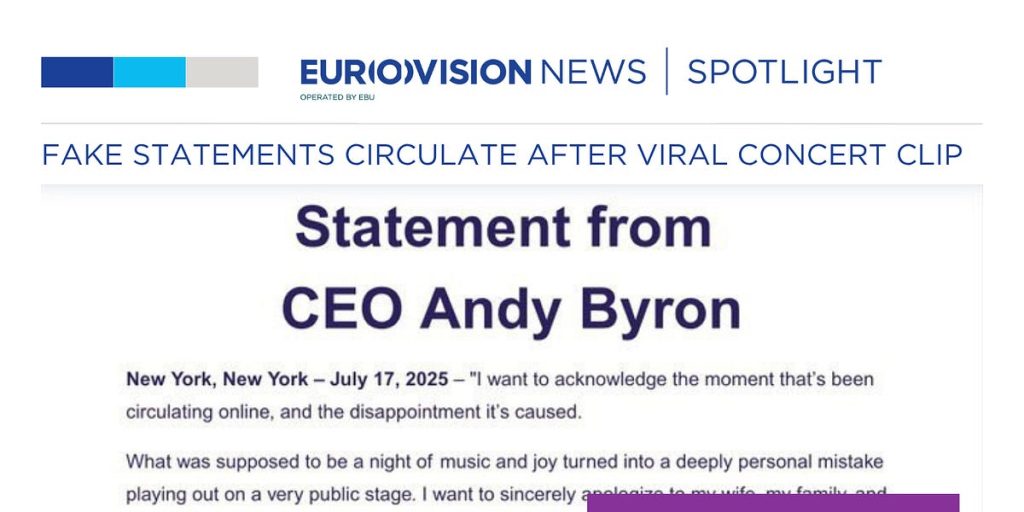Coldplay Concert Kiss-Cam Sparks Viral Misinformation Storm
A viral TikTok video capturing a seemingly intimate moment between two individuals at a Coldplay concert in Foxborough, Massachusetts, ignited a social media firestorm, fueled by speculation of a workplace affair and propagated by fabricated statements attributed to the alleged participants. The video, which quickly amassed millions of views across various platforms, showed a couple cuddling before ducking out of view after realizing they were featured on the concert’s Jumbotron. Online commentators identified the pair as Andy Byron, CEO of tech startup Astronomer, and Kristin Cabot, the company’s HR chief. This identification, coupled with Chris Martin’s playful on-stage commentary about the couple possibly having an affair, propelled the video into the viral stratosphere.
The online frenzy escalated as internet sleuths claimed Byron’s wife had removed his surname from her social media profile, further fueling the narrative of an extramarital affair. Amidst the clamor for updates, fabricated statements purportedly from Byron began circulating. These counterfeit statements, designed to appear as official pronouncements, expressed apologies to Byron’s family and the Astronomer team. Another fabricated statement, seemingly posted on Astronomer’s official X (formerly Twitter) account, featured a satirical admission of guilt and a declaration of Coldplay fandom.
These fabricated statements gained significant traction on social media and even infiltrated mainstream news coverage, highlighting the rapid spread of misinformation in the digital age. The company, Astronomer, swiftly debunked the statements as fake, confirming that Byron had not released any official communication regarding the incident. Despite the debunking, the false statements continued to circulate, underscoring the difficulty of containing misinformation once it has gained momentum. The incident serves as a cautionary tale about the need for critical evaluation of information encountered online.
The viral video and the subsequent misinformation surrounding it created a perfect storm of online speculation, fueled by the public’s appetite for salacious gossip. The ease with which fabricated screenshots were created and disseminated underscores the challenges faced by both news outlets and social media users in verifying information. The incident exposed vulnerabilities in journalistic practices, as some media outlets initially reported the fabricated statements as genuine before issuing corrections.
The Coldplay concert video incident serves as a stark reminder of the power of social media to amplify both truthful and false narratives. The speed at which the video and the accompanying misinformation spread highlights the need for heightened vigilance in the digital age. The episode also underscores the importance of media literacy and the responsibility of news consumers to critically assess information, especially in the fast-paced world of online news.
Beyond the individuals directly involved, the incident sparked a broader discussion about privacy in the digital age and the ethical implications of sharing and commenting on personal moments captured in public settings. The incident raises questions about the boundaries between public and private life in an era where smartphones and social media are ubiquitous. It also highlights the potential consequences of online speculation and the importance of responsible social media engagement.
Furthermore, the incident exemplifies the challenges posed by the rise of AI-generated content and the increasing difficulty of distinguishing between authentic and fabricated materials. As technology continues to advance, the ability to create realistic fake content will likely become even more sophisticated, further complicating the task of verifying online information. This underscores the need for robust fact-checking mechanisms and a greater emphasis on media literacy education for individuals and news organizations alike. The Coldplay concert kiss-cam saga serves as a valuable lesson about the viral nature of misinformation and the importance of critical thinking in the digital landscape.


